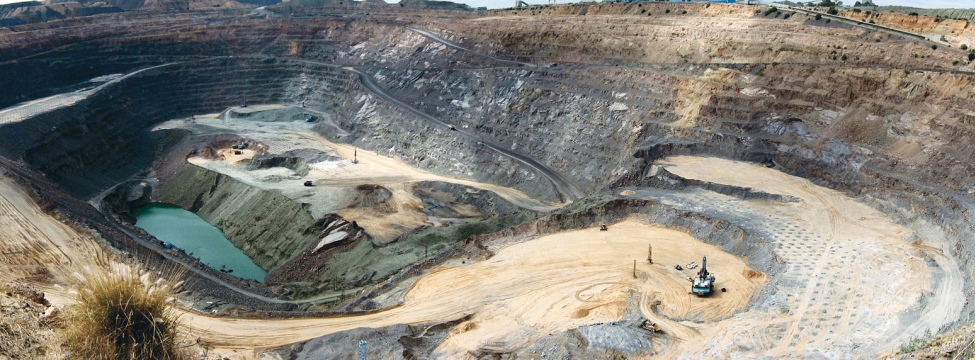To serve you better, our new website displays information specific to your location.
Please visit the site and bookmark it for future use.
Probabilistic stability analysis for pit slope optimisation at Jwaneng diamond mine, Botswana
The Jwaneng Mine is situated in the Republic of Botswana, approximately 160 km west of Gaborone. The open pit has a general NNE-SSW orientation, with waste dumps located to the west and the process plant area to the east. The excavation of the Cut 8 pit will remove part of the plant area. The current pit has a depth of 330m while the planned pit will have a depth of 645m. SRK carried out a detailed probabilistic stability analysis of the east slope to optimise the design of Cut 8 and ensure adequate performance of the slope and integrity of the plant installations in its vicinity. The analysis also provided data for a quantitative risk evaluation which will incorporate the impacts of slope failure.
The Jwaneng open pit cuts through Paleoproterozoic-aged sedimentary rocks dipping between 10° and 40° towards the NW. The main rock types are laminated shales, carbonaceous shales and quartzitic shales occurring in a complex assemblage of tilted and displaced blocks, with dolomites at the base of the slope. The relatively unfavorable attitude of the strata in the east wall is the overriding geological factor governing the stability of the slopes. For this reason SRK used an anisotropic rock mass model for the stability analysis of the interramp and overall slopes, with welded joint strength in the direction of foliation and rock mass strength in other directions.
The rock mass strength parameters were estimated based on the geotechnical borehole logs and on the results of the laboratory testing program. A comprehensive database with this information was used to characterise the rock mass. Groundwater conditions were estimated from the data collected in piezometers considering different dewatering scenarios. The estimated properties were calibrated with analysis of the current slope geometry.
The slope stability analyses were performed on representative sections of the slope with the Rocscience program Slide. Factors of safety (FoS) were calculated using average Mohr-Coulomb parameters. The analysis of probability of failure (PoF) was done using the “Response-Surface” methodology, considering the rock parameters UCS and GSI as uncertain variables for the probabilistic calculation.
As a result of the study, SRK confirmed the low likelihood of overall failures and low potential of economic impact from these events. The critical areas of interramp stability were identified and flagged for a detailed risk consequence analysis. Finally, key design aspects that need to be re-assessed and upgraded on a regular basis as the mining progresses were identified.
Luis-Fernando Contreras: lfcontreras@srk.co.za
|
You can download a PDF of the entire |
PDF
A4 |
PDF
Letter |
|
|
|
Our newsletters focus on specific areas of interest to earth resource professionals and clients. Each is available as an Adobe Acrobat PDF file. If you don't already have Adobe's PDF reader, you can download it free.
![]()


